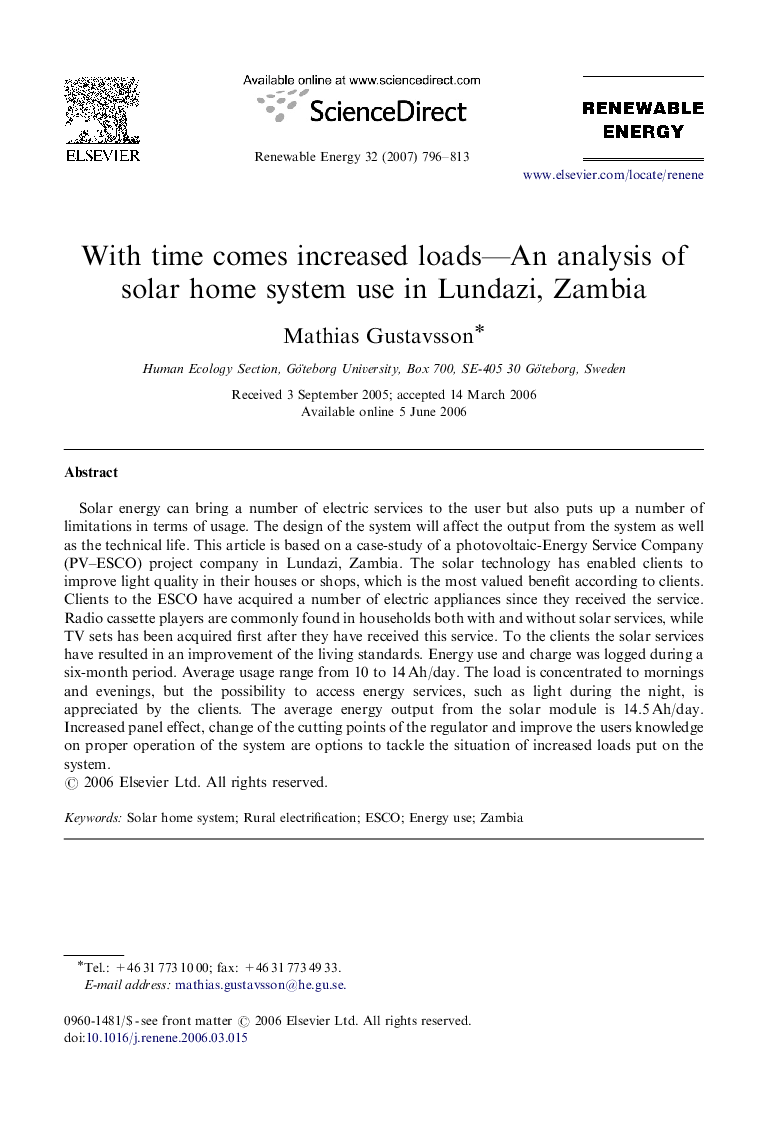| Article ID | Journal | Published Year | Pages | File Type |
|---|---|---|---|---|
| 302833 | Renewable Energy | 2007 | 18 Pages |
Solar energy can bring a number of electric services to the user but also puts up a number of limitations in terms of usage. The design of the system will affect the output from the system as well as the technical life. This article is based on a case-study of a photovoltaic-Energy Service Company (PV–ESCO) project company in Lundazi, Zambia. The solar technology has enabled clients to improve light quality in their houses or shops, which is the most valued benefit according to clients. Clients to the ESCO have acquired a number of electric appliances since they received the service. Radio cassette players are commonly found in households both with and without solar services, while TV sets has been acquired first after they have received this service. To the clients the solar services have resulted in an improvement of the living standards. Energy use and charge was logged during a six-month period. Average usage range from 10 to 14 Ah/day. The load is concentrated to mornings and evenings, but the possibility to access energy services, such as light during the night, is appreciated by the clients. The average energy output from the solar module is 14.5 Ah/day. Increased panel effect, change of the cutting points of the regulator and improve the users knowledge on proper operation of the system are options to tackle the situation of increased loads put on the system.
